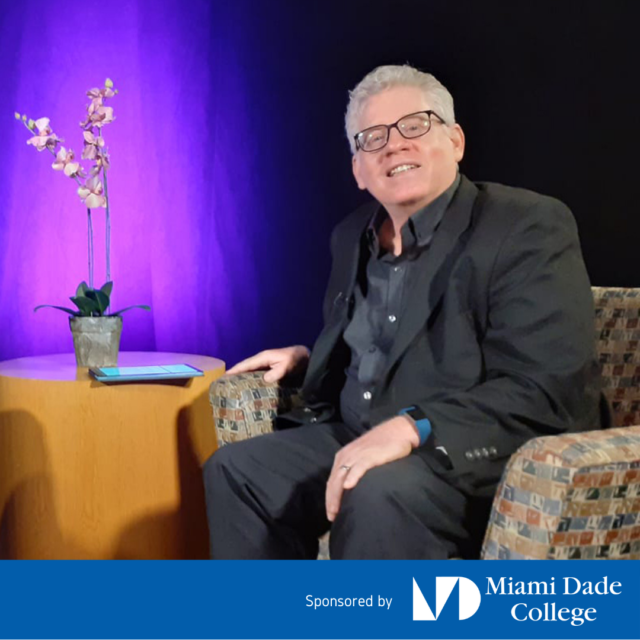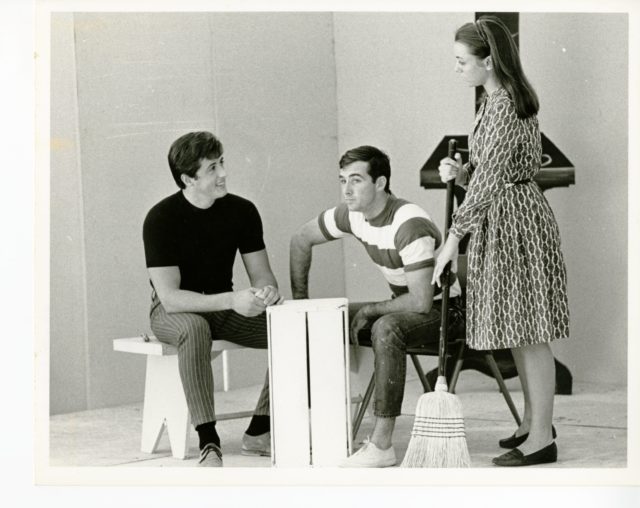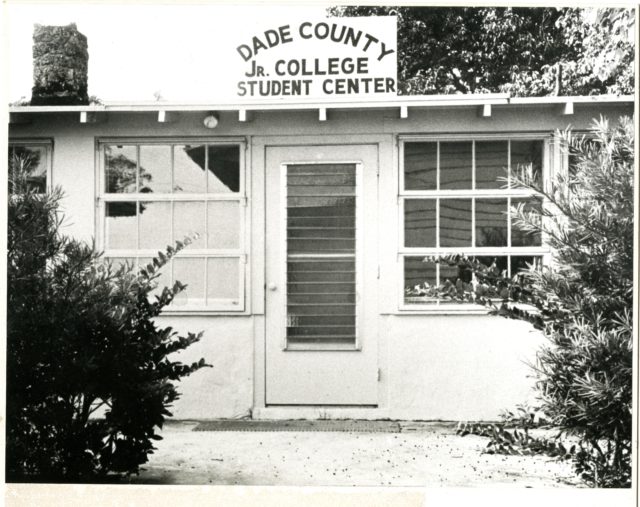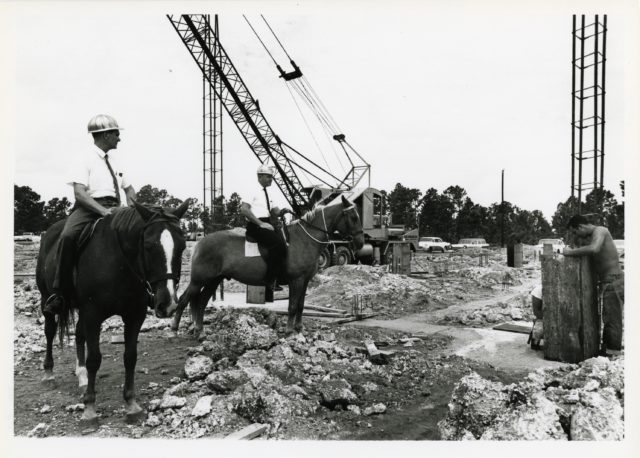
We’re doing something a bit different for today’s #TBT — and over the next few weeks. The New Tropic has partnered with Miami Dade College to celebrate the school’s history and contributions to the community in preparation for I AM MDC Day. Every year on September 6, the college commemorates its opening in 1960 and invites Miamians to make a financial donation to an institution that’s served millions of students across six decades. The funds raised by I AM MDC Day go toward upholding the school’s mission of keeping higher education affordable and accessible by funding tuition and supporting students in need.
Now through September 6, we’ll be using #TBT to spotlight MDC’s history and the myriad ways the college has empowered both those who attend and Miami-Dade at large. We’re kicking off this series today by chatting with Rene Ramos, the director of MDC’s archives department. As both a former student and longtime employee, you’ll be hard-pressed to find someone more qualified to speak on the school’s history and points of pride than him…
 Rene Ramos has seen how Miami Dade College can change lives firsthand in both his personal life and occupation. (📸: Courtesy photo)
Rene Ramos has seen how Miami Dade College can change lives firsthand in both his personal life and occupation. (📸: Courtesy photo)
Name and pronouns?
Rene Ramos (He/Him/His)
Can you share a little bit about your connection to Miami Dade College?
I am both an alumnus and a longtime employee of the college. My connection to MDC goes back about 40 years and I’ve occupied various roles over the years. As an employee, I started out in the ‘90s as a programmer/developer in the IT area and gradually moved into archives management.
What does the role of archivist entail — what are the responsibilities of the position?
Archivists are caretakers of collective memory. We take care of physical and digital artifacts that capture elements of individual, organizational, and cultural memory. On a day-to-day basis, my responsibilities revolve around ensuring the physical safety of our artifacts and the data integrity and security of our digital assets. In practice, this means we become quite friendly with air conditioning technicians and IT folks.
In addition, I do a fair amount of grant writing, fundraising, and budget voodoo to make sure we have the long-term financial support to keep our operations going. I also work with our staff to develop public programming that connects the community to our collections.
What’s a detail from MDC’s history that’s worth emphasizing or that you think more people should know about?
We were one of the first higher learning institutions in Florida to racially integrate; this was back in the early 1960s when the region was slowly emerging from the Jim Crow era. This set the tone for our long commitment to inclusiveness and racial justice.
How has MDC served the community over the years?
Our roots are in the so-called “community college” model of open access for both traditional and non-traditional students. While we have evolved to offer bachelor’s degrees in numerous areas, we still keep that sense of community service at the heart of everything we do.
At this point, we’ve served millions of students and just about everyone who lives in South Florida has been touched in some way by the college, whether by attending the school itself or receiving services from the countless professionals we’ve graduated in scores of disciplines.
How has the school changed to keep up with the times and best serve students?
We have developed a stellar virtual operation known as MDC Online that has carried our “Students First” ethos into cyberspace and made it possible for students to achieve their educational goals wherever they may be. MDC Online has been around for quite some time but has become critically important during the past year of COVID quarantines.
However, there are important ways in which the school has not changed. Chief among them is our commitment to keeping the costs of attending as low as possible, making admissions and access as seamless as possible, and providing quality offerings that can stand alongside any higher education institution in the country. I challenge you to find a college that serves a wider range of students: At one end of the spectrum we have students who come to us with learning deficits in college-level reading and math, and at the other, we have Honors College graduates who transfer to Ivy League schools.
Are there any particular alumni you’d like to give a shout-out to?
“Yo, Rocky!” Sylvester Stallone — and we have pics to prove it!

Sylvester Stallone in a Miami Dade College student theatrical production circa 1967. (📸: Courtesy photo)
What is the first photo of the college on record — who’s in it and what’s taking place?
This is a picture of our first student center at a temporary facility in north Miami-Dade county. When we first opened in 1960, we served a little over 1,400 students. We’ve served millions since then, and now enroll about 80,000 credit students and many more non-credit students seeking life enrichment.
Are there any photos from MDC’s archive that you think best embody the spirit of the school?
One of my favorites is of two architects roaming the grounds of what would become our Kendall Campus on horseback. I think it communicates our pioneering spirit in building an institution that our community can be proud of:
What can people learn from MDC’s history?
I think we embody the words of John Dewey: “Education is not preparation for life; education is life itself.” In a lot of ways, the history of our institution not only mirrors but embodies the history of our community.
You can learn more about I AM MDC Day and make a contribution to the college’s essential mission by clicking right here. Be sure to follow MDC on Facebook, Instagram, and Twitter to stay up-to-date with the school, its students, and how they’re making a difference in Miami-Dade.

